Friday, April 26. 2013
Via DomusWeb
-----
By Roberto Arista
With its second edition, the Serbian festival – a meeting point for technology and art – establishes itself as a sounding board for a mature and growing scene.
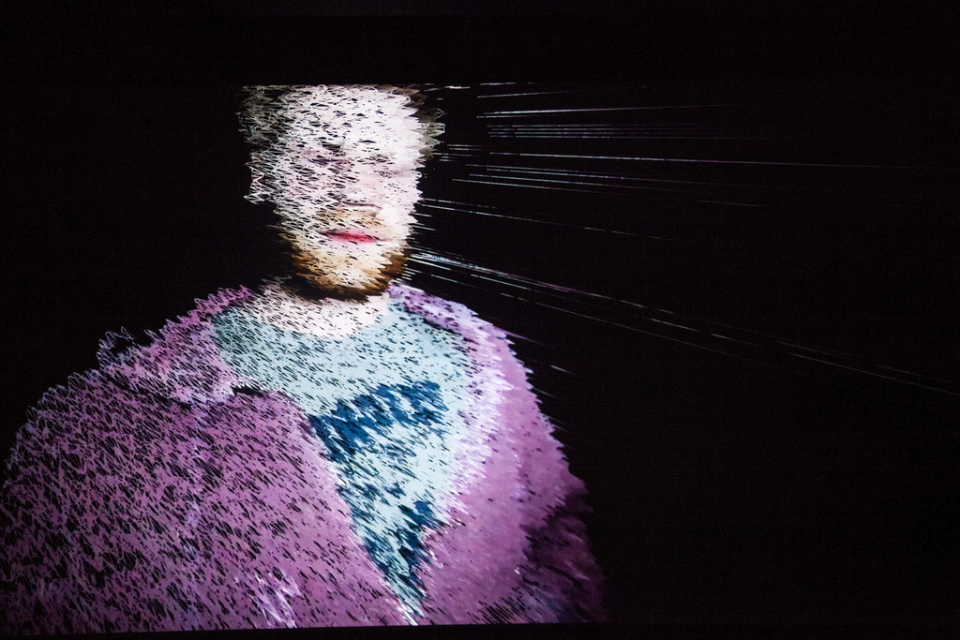
Resonate Festival, Belgrade, 2013. Projection during the debate with Memo Akten, Rainer Kohlberger, Eno Henze and Shane Walter.
Resonate was founded in 2012 by Magnetic Field B and the Creative Applications network, in an attempt to provide the visual arts world with a new platform for discussion. The event focuses on the role of technology in art and culture, and especially on the connections between the disciplines that these areas involve. The 2013 edition took place from March 21 to 23 in the Dom Omladine cultural space, close to the city’s Republic Square. More than 1200 visitors attended the event, which was already sold out several days before the opening.
The first day was devoted to a rich and varied assortment of workshops – open to all selected participants – regarding the analysis of the available tools (hardware and software) for video mapping, data visualization on different media, the design of cross-platform applications, or even the choreography of (flying) drones.
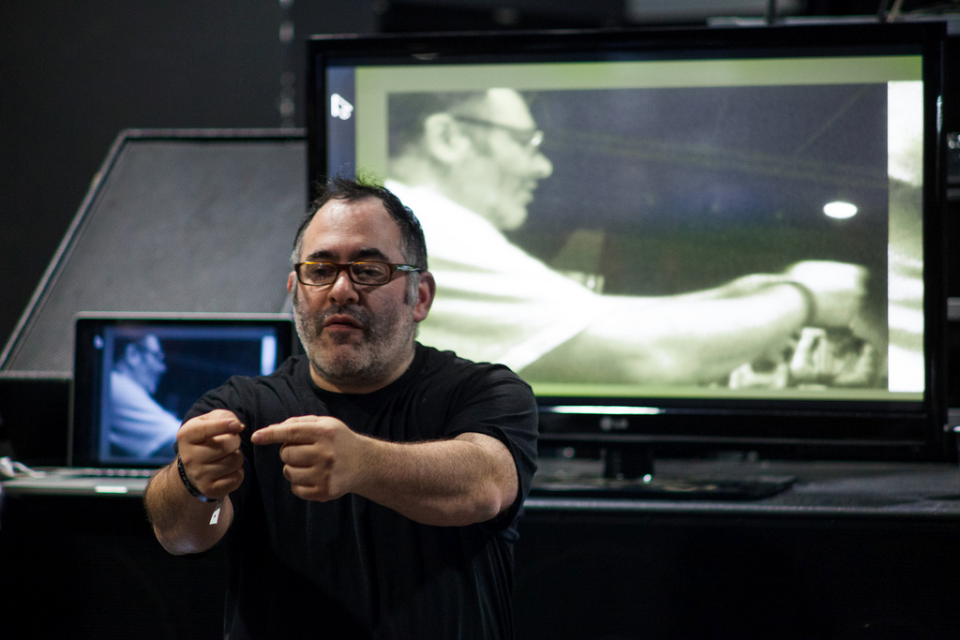
Golan Levin during the “Computer vision in interactive arts” workshop. Photo courtesy of Resonate
The next two days were dedicated to a full program of 44 lectures and video projections. The general impression is that there is a panorama of versatile designers who can carefully hybridise different disciplines and tools – marrying electronic engineering with products, landscape with graphics, analogical techniques with digital media. These designers are bolstered by the freedom to experiment that distinguishes those who are not pigeonholed within a specific category. The profession’s evolution and, more generally, a look at the recent past, were leitmotifs of some of the most interesting projects presented. Examples range from Memo Akten, Golan Levin and Joachim Sauter, who are now ready to offer an engaging retrospective of their projects, to the much admired by the public Meet your creator, Free Universal Construction Kit and Kinetic Sculpture.
The audience in the main room at Dom Omladine during the festival. Photo courtesy of Resonate
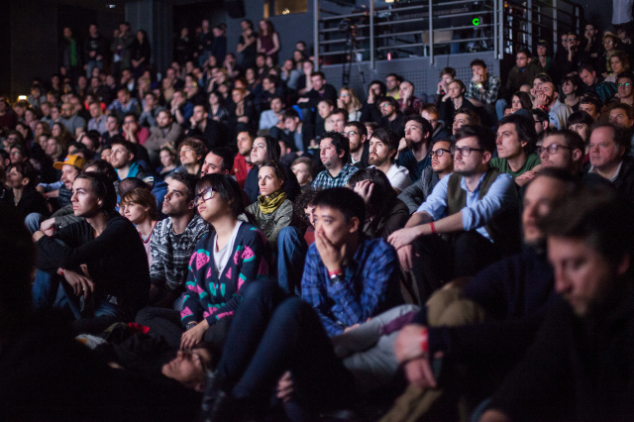
Similarly, a lively debate followed the talk by artist and interaction designer Zach Gage. Is it possible that the "game" – understood within a broader realm than the videogame – has not yet found the right place to be preserved, celebrated and narrated?
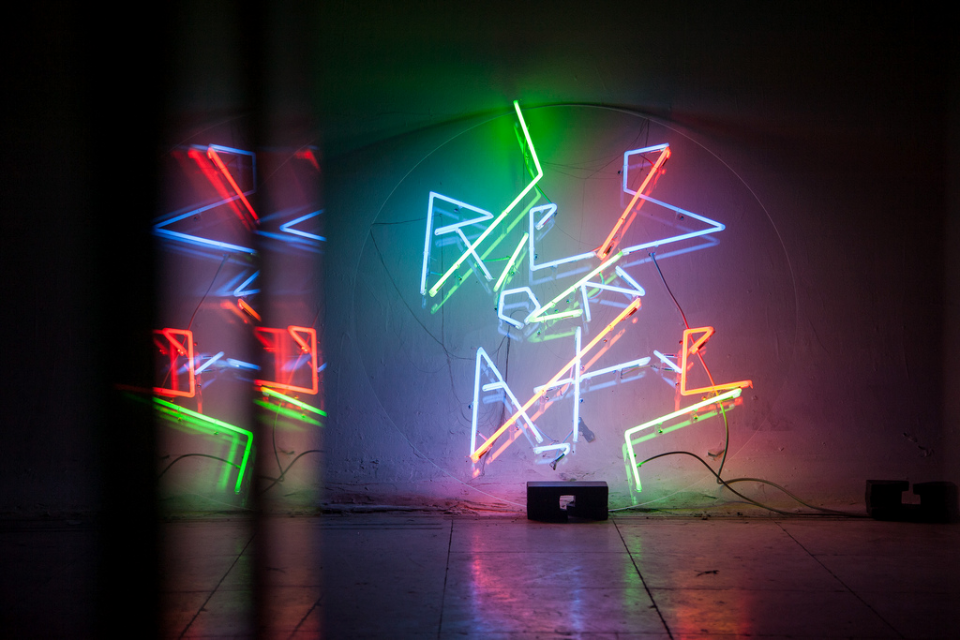
A view of the Building Kluz, where many of the festival's performances took place. Photo courtesy of Resonate
Participants were moved by London-based architect, critic and curator Liam Young’s future scenarios and landscape mutations. Projects like Silent Spring dampened that blind faith in technological advancement that permeated the festival. The work by professors in Europe’s most popular Interaction Design courses was of great interest, in particular Anthony Dunne from the RCA in London, David Gauthier from CIID in Copenhagen and Alain Bellet from ECAL in Lausanne. These schools have overcome the unnecessary separation between the humanistic and scientific universes, while in Italy the legacy left behind by Benedetto Croce still paralyses many university courses.
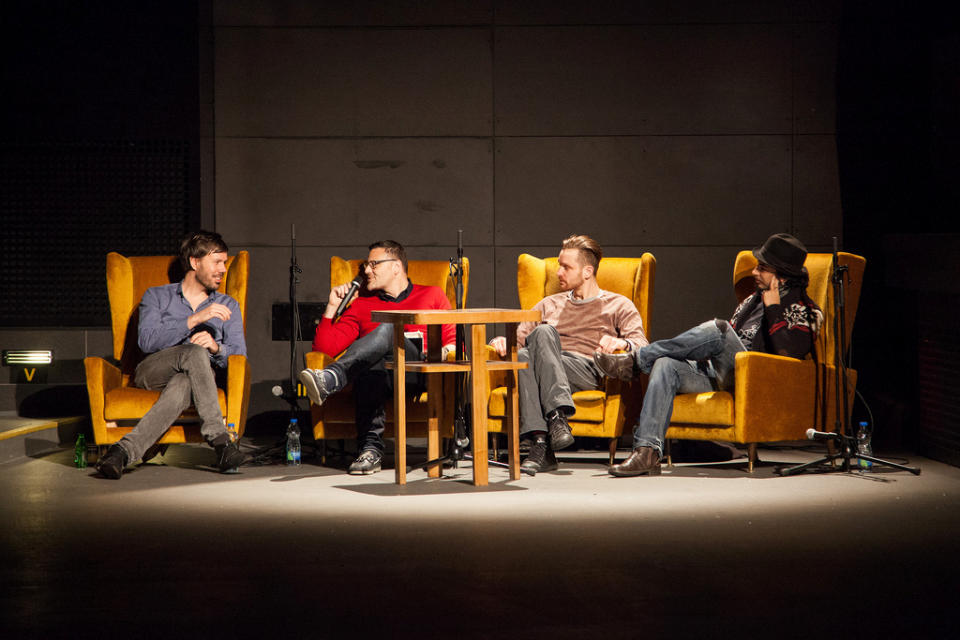
Debate participants during the second day of the festival: Memo Akten, Rainer Kohlberger, Eno Henze and Shane Walter. Photo courtesy of Resonate
It is striking that there were no Italian presenters given the number of European speakers. This is probably due to the Italian design world’s reluctance to accept the digital sphere. However, some undisputed masters were mentioned: Luigi Serafini, whose Codex Seraphinianus has become an international case study, or Bruno Munari’s work in design teaching.
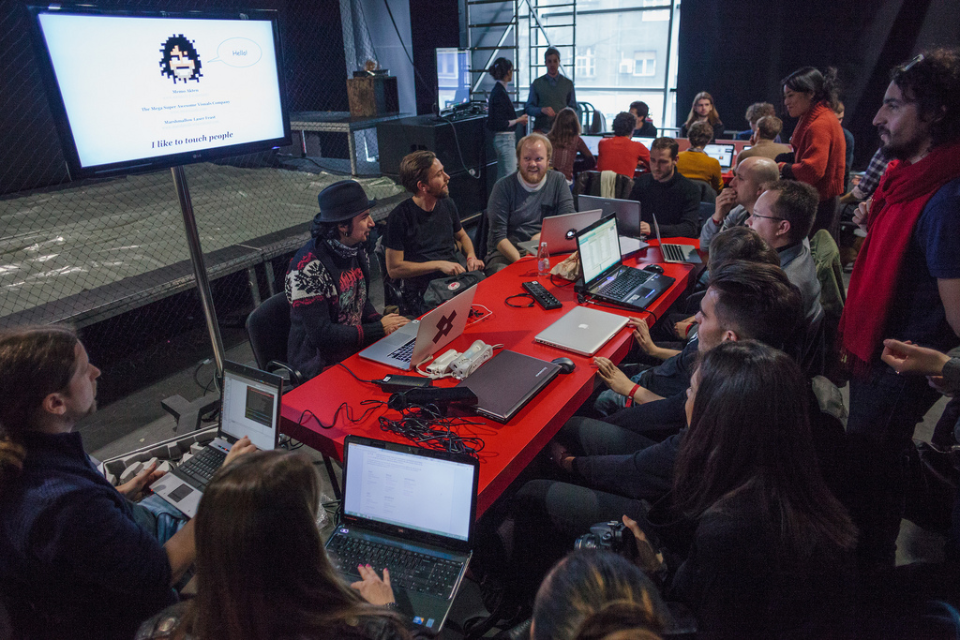
A view of Memo Atken's "How I learnt to stop worrying and love the drones" workshop. Photo courtesy of Resonate.
It became evident that childlike curiosity is fundamental in developing languages and tools. Many festival speakers dared to compare their more mature projects with images from their childhoods, so it is no coincidence that a statement by Carl Sagan’s was heard several times during the festival: "Every kid starts out as a natural-born scientist, and then we beat it out of them. A few trickle through the system with their wonder and enthusiasm for science intact." Roberto Arista
Personal comment:
A little report by Roberto Arista on Domusweb about the last and good Resonate conference that happened in Belgrade last March. With the talk of Alain Bellet that is head of the very good bachelor in Interaction Design at the ECAL, in Lausanne Switzerland (and occasionally, my "boss" too, as I'm teaching there as well)!
Wednesday, April 24. 2013
The Lewis Residence by Frank Gehry (1985–1995), Peter Eisenman’s unrealized Biocentrum (1987), Chuck Hoberman’s Expanding Sphere (1992) and Shoei Yoh’s roof structures for Odawara (1991) and Galaxy Toyama (1992) Gymnasiums: four seminal projects that established bold new directions for architectural research by experimenting with novel digital tools. Curated by architect Greg Lynn, Archaeology of the Digital is conceived as an investigation into the foundations of digital architecture at the end of the 1980s and the beginning of the 1990s.
Watch an introduction to Archaeology of the Digital by curator Greg Lynn here.
Watch a conversation between Peter Eisenman, architect of the Biozentrum and Greg Lynn here.
The vernissage for Archaeology of the Digital is 7 May 2013.
On 8 May, from 2 pm to 6 pm, Greg Lynn discusses the foundations of digital architecture with Peter Eisenman, Chuck Hoberman and Shoei Yoh.
Personal comment:
Though we are not really in this line of thinking regarding what digital technologies means/will mean for architecture, an interesting "archeological" exhibition next May at the CCA about the rise of computation and algorithmic tools in architecture back in the late 1980ies and early 1990ies.
And an interesting discussion as well between Peter Eisenman and his former "apprentice", Greg Lynn.
Monday, April 22. 2013
Via Architecture Source via Archinect
-----
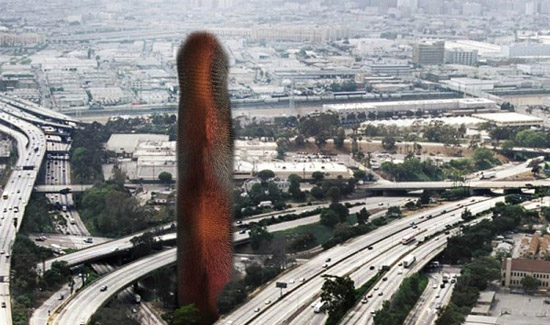
soundscraper. Source: eVolo 2013 Skyscraper Competition
Soundscrapers could soon turn urban noise pollution into usable energy to power cities.
An honourable mention-winning entry in the 2013 eVolo Skyscraper Competition, dubbed Soundscraper, looked into ways to convert the ambient noise in urban centres into a renewable energy form.
Noise pollution is currently a negative element of urban life but it could soon be valued and put to good use.
Acoustic architecture, or design to minimise noise, has long been an important facet of the architecture industry, but design aimed at maximising and capturing noise for beneficial reasons is an untapped area with great potential.
The Soundscraper concept is based around constructing the buildings near major highways and railroad junctions to capture noise vibrations and turn them into energy. The intensity and direction of urban noise dictates the vibrations captured by the building’s facade.
Covering a wide array of frequencies, everyday noise from trains, cars, planes and pedestrians would be picked up by 84,000 electro-active lashes covering a Soundscraper’s light metallic frame. Armed with Parametric Frequency Increased Generators (sound sensors) on the lashes, the vibrations would then be converted to kinetic energy through an energy harvester.
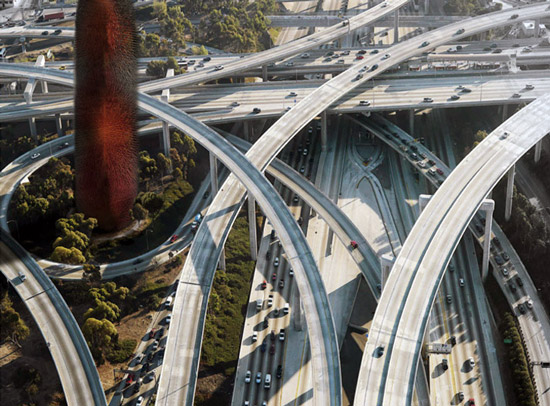
soundscraper. Source: eVolo 2013 Skyscraper Competition
The energy would be converted to electricity through transducer cells, at which point that power could be stored or sent to the grid for regular electricity usage.
The Soundscraper team of Julien Bourgeois, Savinien de Pizzol, Olivier Colliez, Romain Grouselle and Cédric Dounval estimate that 150 megawatts of energy could be produced from one Soundscraper, meaning that a single tower could produce enough energy to fuel 10 percent of Los Angeles’ lighting needs.
Constructing several 100-metre high Soundscrapers throughout a city near major motorways could help offset the electrical needs of the urban population. This form of renewable energy would also help lower the city’s CO2 emissions.
The energy-producing towers could become city landmarks and give interstitial spaces an important function. The electricity needs of an entire city could be met solely by Soundscrapers if enough were constructed at appropriate locations, also helping to minimise the city’s carbon footprint.
Wednesday, April 03. 2013
By fabric | ch
-----
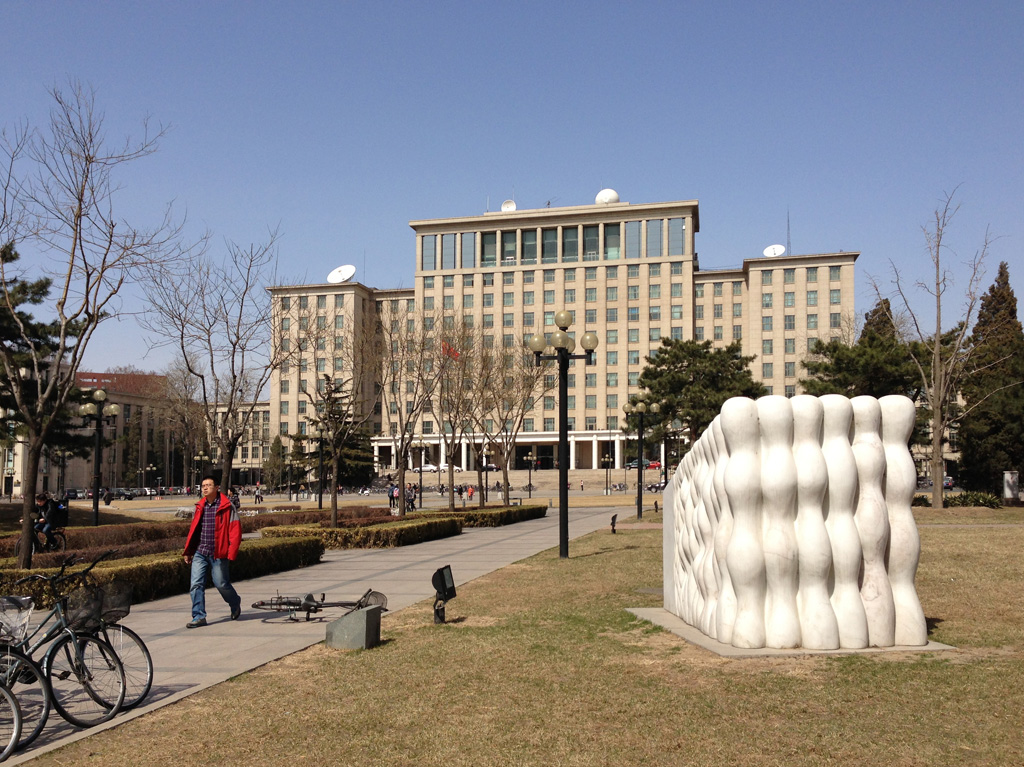
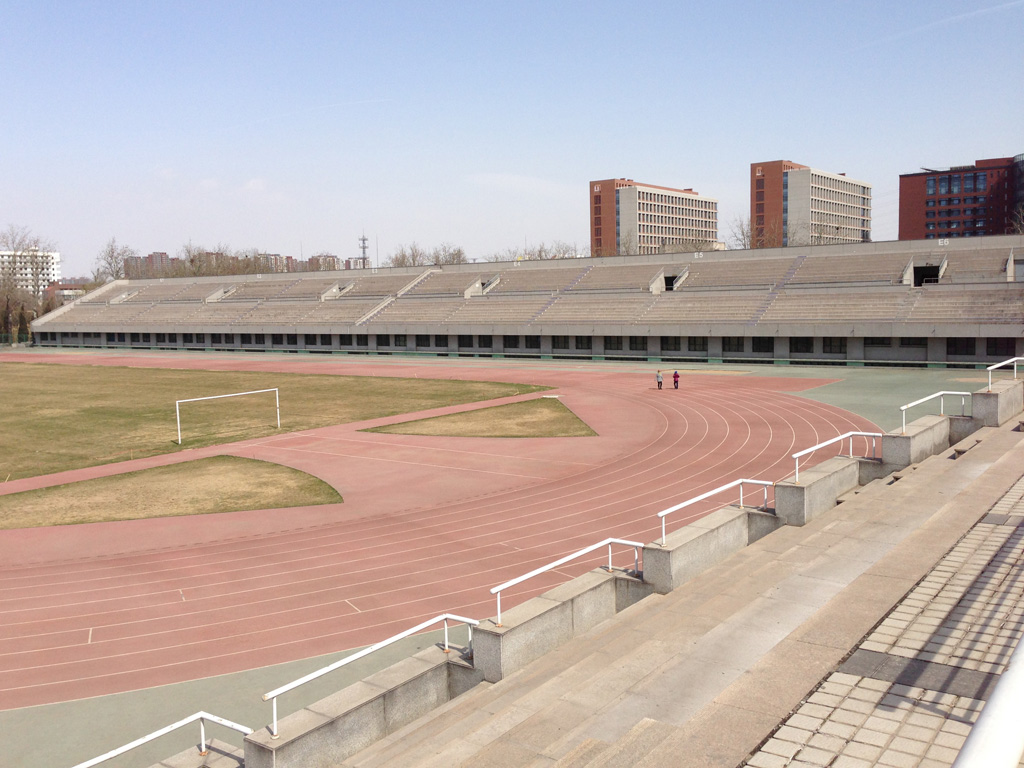 
At the invitation of Zhang Ga, curator and director of the TASML Lab at the Tsinghua University in Beijing (joint lab between Parsons School of Design and the Tsinghua University, in fact), to start develop a research project and run a short workshop with the students, I'm currently located for a month approximately alternatively on the campus and in town. The residency will last until mid July and other members of fabric | ch will come later.
We are starting here a new line of project that we've titled (so far) Deterritorialized Living and that will group several projects (Deterritorialized Daylight, Deterritorialized Air, Deterritorialized Heat and Deterritorialized House that will use some of these climatic elements to define a strange house).
The main idea of this project is to take on the emergent and yet almost invisible "icon" of the data center. To take it as a background for our project. A kind of re-emergence of the modern "international" ("ubiquitous"?) idea, transformed: a modern "specter", as Clog mentioned it. We try to question and anaylze it (its centrality, its ambiguous status of privately hosted if not owned people's data, its energy consuption, its heat production, its physical location and use of ressources, its seriality --rack structure--, etc.). But in fact, we want to push its own logic to its end: into a fully deterritorialzed way of living, with permanent --in fact almost useless-- access to (zombie) services and data, out of physical location and time zones. We want to study this situation and produce designs to respond to it.

The workshop part in itself that we are running here is a sub-subject of our own research, it is about inhabiting the computer cabinet or rather the servers cabinet, slightly extended therefore, but still minimal living. The workshop is entitled "Inhabiting the Computer Cabinet, with two suns", but I'll do a dedicated post about this later.

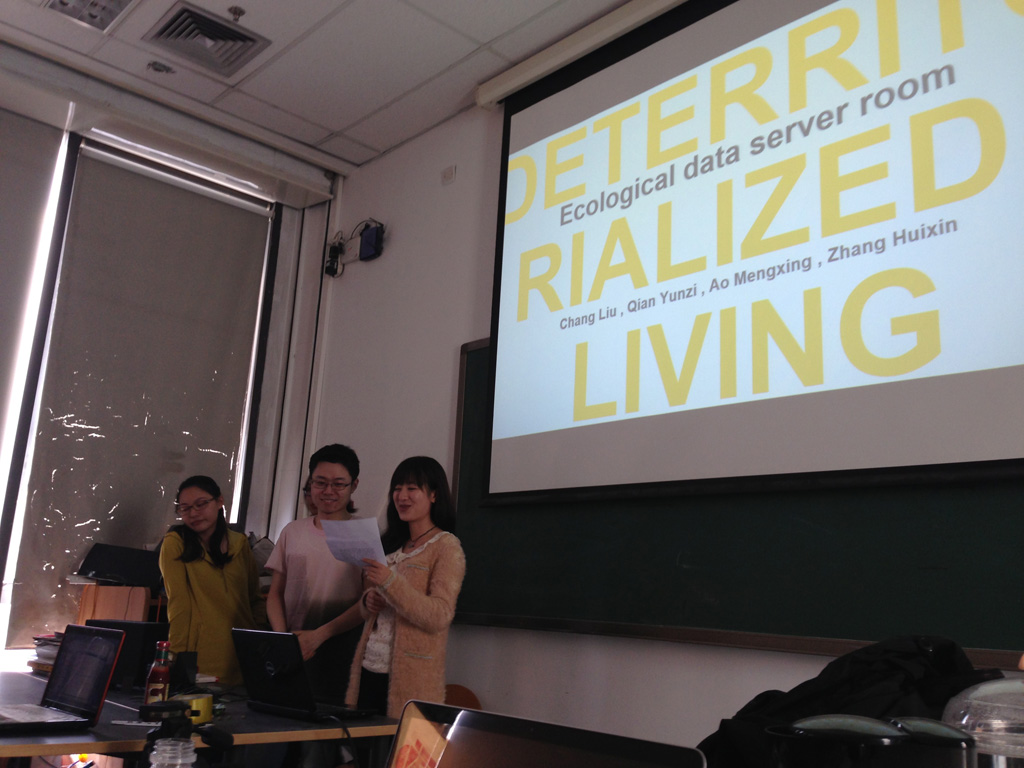 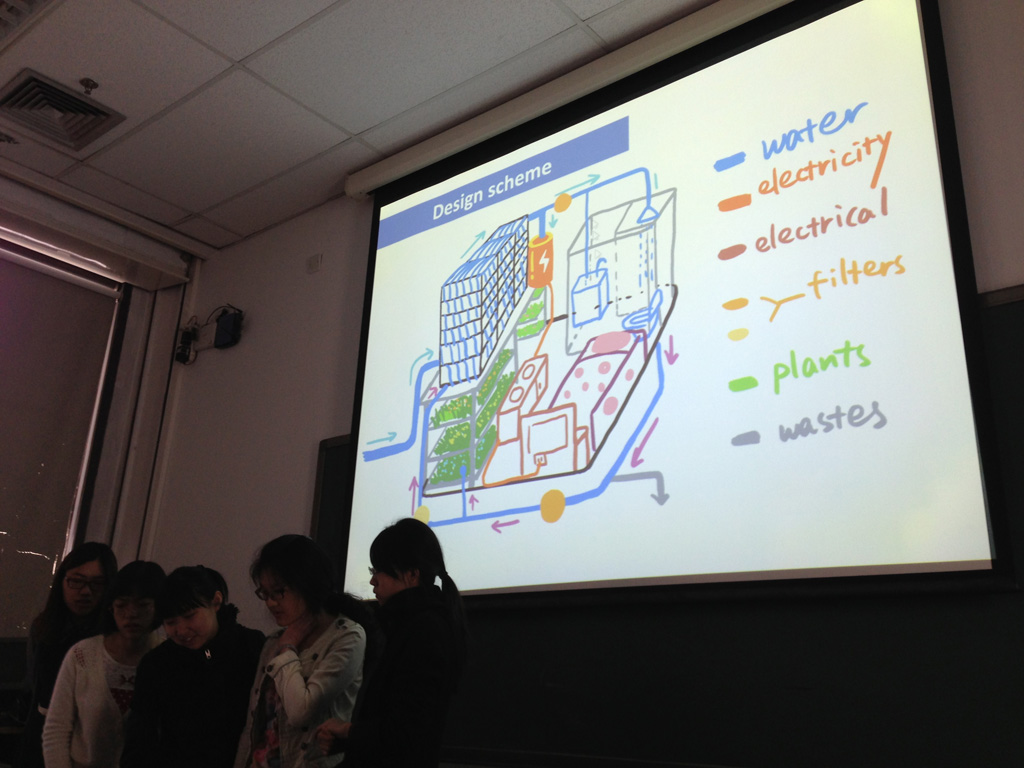

All in all, my own situation here in Beijing for a month gives me the occasion to really experience and analyze my own "deterritorialized" way of living, as I fully rely on software and networks architectures to keep working with the rest of the team in Switzerland (vpn to bypass some digital territorialities, clouds services of all sorts, video calls, file exchanges, etc.), as well as to periodically relocate myself with the help of an american gps service or to speak and exchange with people here.
I really look forward for the results of the workshop and of our own work! So more about it in the coming days/weeks...
Via ArchDaily
-----
Following on from their previous ‘videopolemic’ tribute to Lebbeus Woods, 32BNY has released their second video featuring artist and designer Vito Acconci’s response to the question, “Is architecture art?”. Having straddled both architecture and art throughout his carrer, Acconci is cleary comfortable in discussing their relationship, as he talks passionately about the importance of putting people at the center of both. “Because architecture is used… it can possibly be misused, and once it is misused, I think, the user goes one step further…than the architect”.
More about Acconci after the break…
Although he first became prominent for his radical performance and installation art in the 1970′s, Vito Acconci was deeply involved in furniture design and architecture towards the end of the 1980′s – a natural step considering his belief that the public should be ‘participants in’ art rather than ‘viewers of’ it . After founding Acconci Studio in 1988 to explore theoretical design and building, he undertook many architectural and landscape projects – notably his collaboration with Steven Holl to design the facade of the Storefront for Art and Architecture in 1992. The facade, comprised of independently rotating panels which open the gallery to the street, blurs the distinction between the inside and the city and allows for several different configurations.
Although 32BNY admit they do not know what the terms ‘cinematic architectural discourse’, or ‘videopolemic’ mean, they are undeterred from their exploration. You can find out more about them and their work on their website.
Personal comment:
Great yet simple considerations about image vs architecture as well as interaction. The misuse part of architecture is very interesting as well and reminds me a lot of Derrida's approach of language and architecture.
|

















